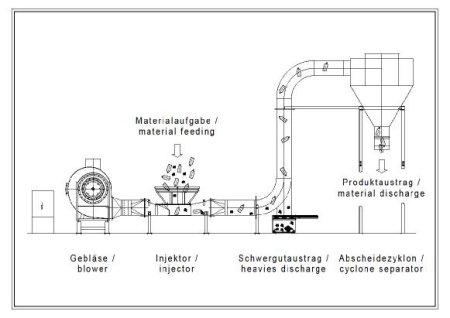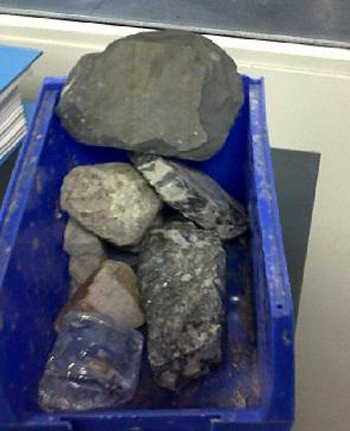Every now and then there is breakdown caused by foreign bodies that enter the recycling machines with the feeding material. In simple cases there is “only” excessive wear at the grinding tools; massive foreign bodies, however, can cause a breakdown of the machine.
There are different approaches of how to solve this problem and how to avoid a breakdown; all of them, however, have detrimental effects: inductive metal separators are only appropriate for detecting metals – often, however, foreign bodies are not metal parts but stones, shoes, wooden pieces; different solutions are often too expensive or would need too much room.
For the separation of foreign bodies HERBOLD MECKESHEIM GmH has developed a very well-priced, simple and efficient solution that is part of a pneumatic conveyor. Heavy materials are separated and evacuated from the product flow (Fig.1 key plan) in an ascending pipe via a discharge chute. The advantage is a double one: on the one hand the foreign bodies are separated and on the other hand no further transport is necessary any
longer.

Fig. 1: key plan
The underlying principle is the following: the different flying speed of the product and heavy materials: all materials with a considerably higher flying speed in the conveying pipe of the pneumatic system are separated.
A first plant has been sold for a PET bottle recycling line: entire bottles, not yet size-reduced, are separated from foreign bodies and at the same time conveyed to the next processing step. The customer, himself, was highly surprised to which extent foreign bodies were detected even during the first days of operation. The attached figure shows some of them.

Fig. 2: foreign bodies
The line is appropriate e.g. for processing bottles that have not yet been size-reduced, but it is also appropriate for separating foreign bodies from pre-shredded thick-walled parts. Not only metal parts but also mineral foreign bodies – generally all heavy parts are separated.




